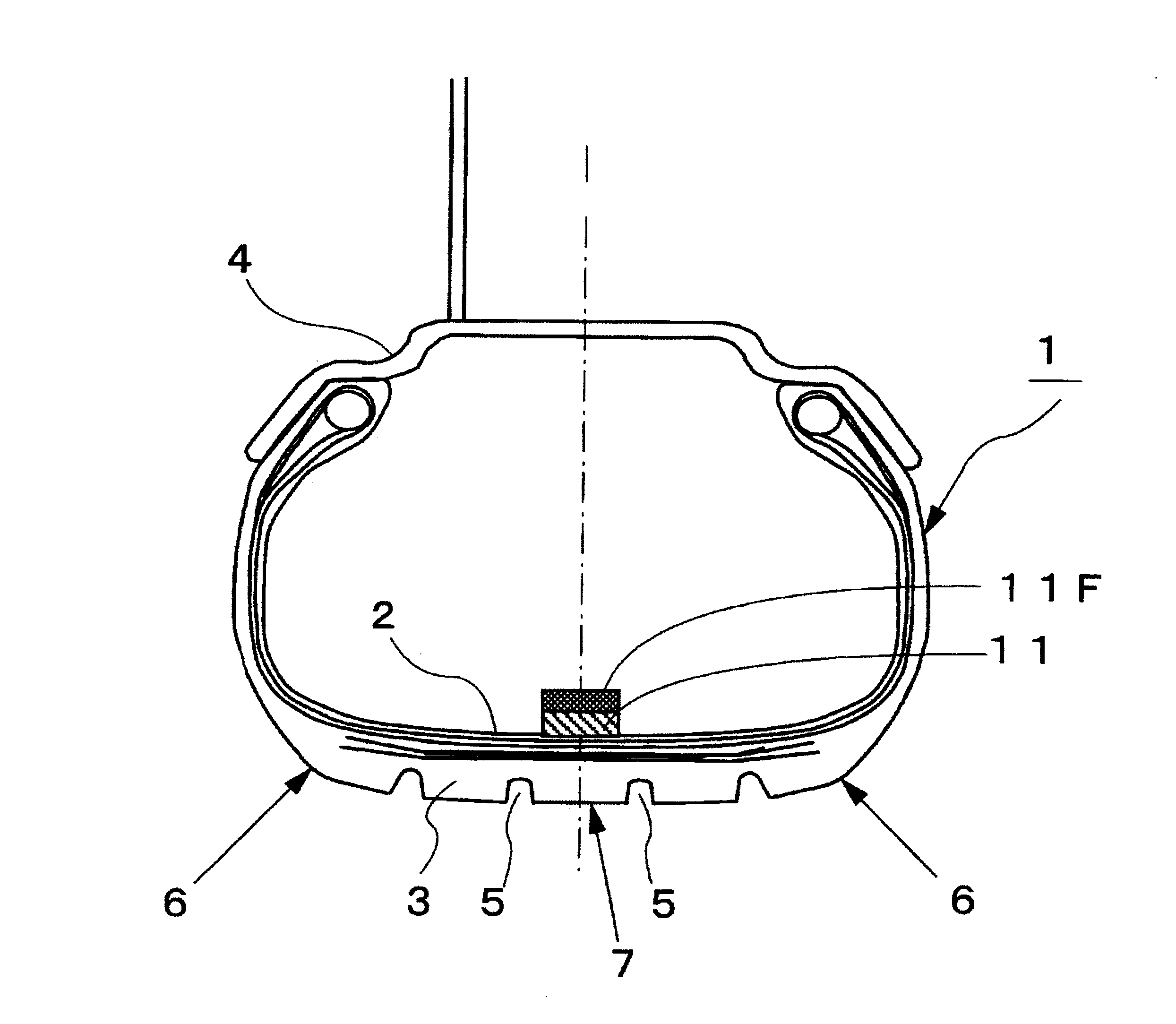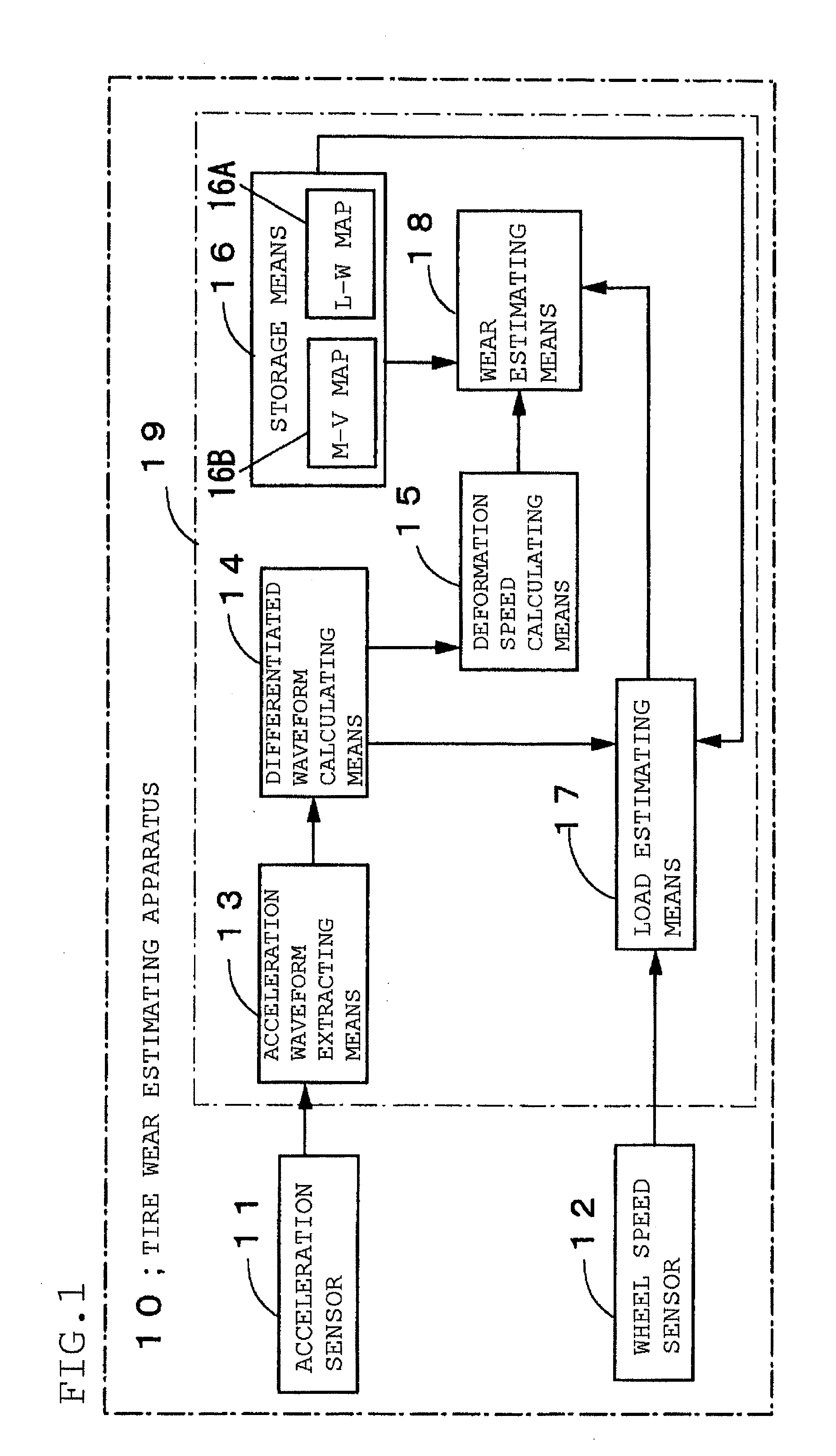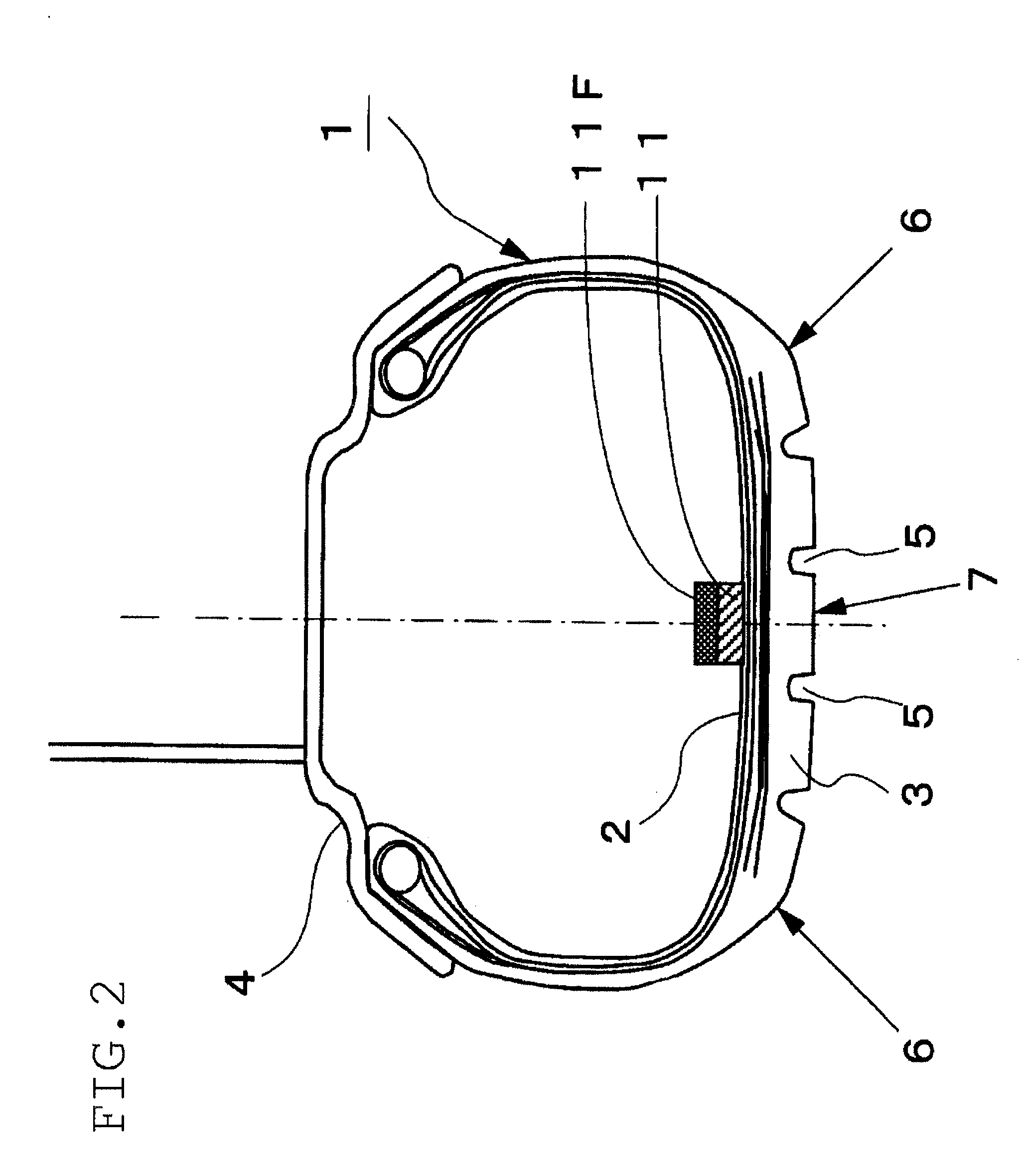Method for estimating the wear of a tire
a tire wear and tire technology, applied in vehicle tyre testing, roads, instruments, etc., can solve the problems of lowering the draining performance and longer braking distance on wet road surfaces, excessive wear, and marked drop in grip performance on icy or snow-covered roads, etc., to achieve high-precision estimation of tire wear and deformation, and accurate detection of the amount of tread deformation
- Summary
- Abstract
- Description
- Claims
- Application Information
AI Technical Summary
Benefits of technology
Problems solved by technology
Method used
Image
Examples
embodiment 1
[0094]FIG. 1 is a functional block diagram showing a structure of a tire wear estimating apparatus 10 according to Embodiment 1 of the present invention. In the figure, reference numeral 11 denotes an acceleration sensor for detecting the acceleration of the tire tread, 12 a wheel speed sensor for detecting the rotational speed of a wheel, 13 an acceleration waveform extracting means for extracting a time-series waveform of the acceleration of the tire tread from the output of the acceleration sensor, 14 a differentiated waveform calculating means for calculating a differentiated waveform of acceleration which is a time-series waveform of values of differentiated acceleration, 15 a deformation speed calculating means for calculating the level of a leading edge side peak, which is the former of the two peaks appearing in the differentiated waveform of acceleration, and outputting the calculated level of the leading edge peak, 16 a storage means 16 for storing a predetermined L-W map ...
embodiment 2
[0131]In Embodiment 1 heretofore described, the degree of wear of a tire is estimated by calculating the index V of deformation speed at the contact edge portion of the tire tread from a differentiated waveform of the radial acceleration of the tire detected by an acceleration sensor 11. However, it is also possible to estimate the degree of tire wear by calculating the index Y of the amount of deformation in the radial direction of the tire at the bulge point of the tread from the radial acceleration waveform of the tire.
[0132]FIG. 10 is a diagram comparing radial acceleration waveforms of the tire tread of summer tires. The tires of 205 / 65R15 size were run on a flat-belt testing machine under the conditions of a speed of 40 km / h, a load of 5 kN, and an internal pressure of 230 kPa. The horizontal axis represents time (sec), and the vertical axis the magnitude (G) of acceleration in the radial direction of the tire. In the figure, the solid line represents the data of a new tire, w...
embodiment 3
[0139]FIG. 12 is a functional block diagram showing a structure of a tire wear estimating apparatus 30 according to Embodiment 3 of the present invention. In the figure, reference numeral 11 denotes an acceleration sensor, 32 an acceleration differentiated waveform calculating means, 33 a deformation speed calculating means, 34 a rotation time calculating means, 35 a contact time calculating means, 36 a contact time ratio calculating means, 37 a standardized deformation speed index calculating means, 38 a storage means, and 39 a tire wear estimating means.
[0140]In the same way as in Embodiment 1 and Embodiment 2, the acceleration sensor 11 detects the acceleration of the inner surface of the tire tread. And this acceleration sensor 11 constitutes a sensor section 30A of the tire wear estimating apparatus 30 according to the present invention, and the component means from the acceleration differentiated waveform calculating means 32 to the wear estimating means 39 constitute a calcul...
PUM
 Login to View More
Login to View More Abstract
Description
Claims
Application Information
 Login to View More
Login to View More - R&D
- Intellectual Property
- Life Sciences
- Materials
- Tech Scout
- Unparalleled Data Quality
- Higher Quality Content
- 60% Fewer Hallucinations
Browse by: Latest US Patents, China's latest patents, Technical Efficacy Thesaurus, Application Domain, Technology Topic, Popular Technical Reports.
© 2025 PatSnap. All rights reserved.Legal|Privacy policy|Modern Slavery Act Transparency Statement|Sitemap|About US| Contact US: help@patsnap.com



